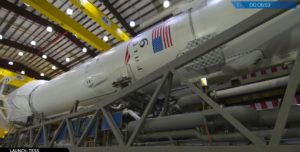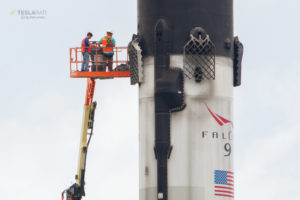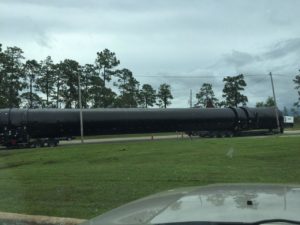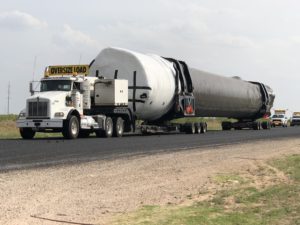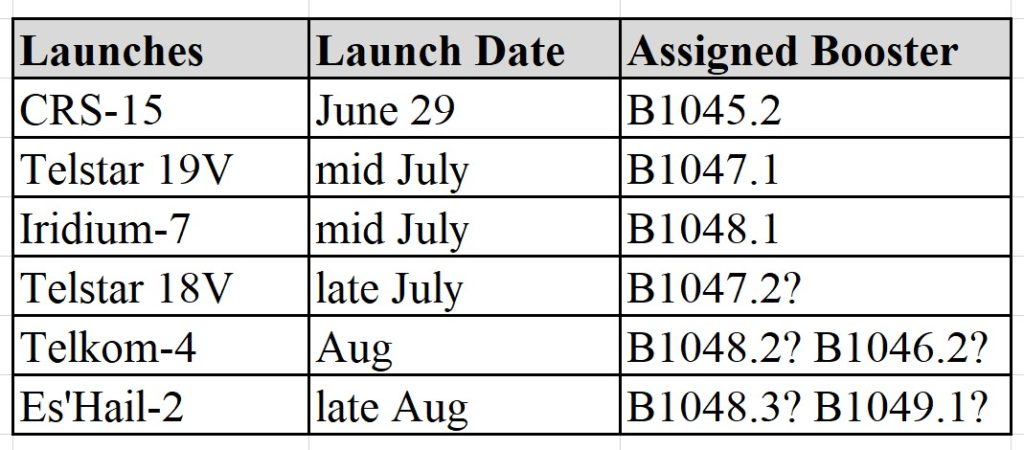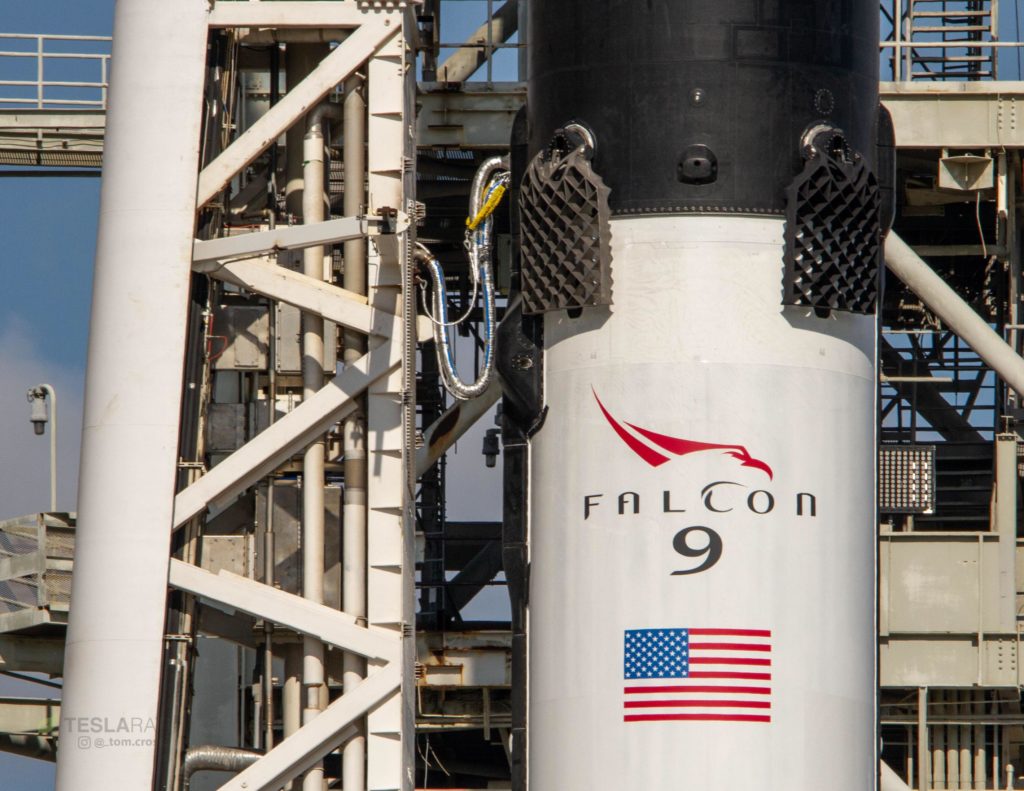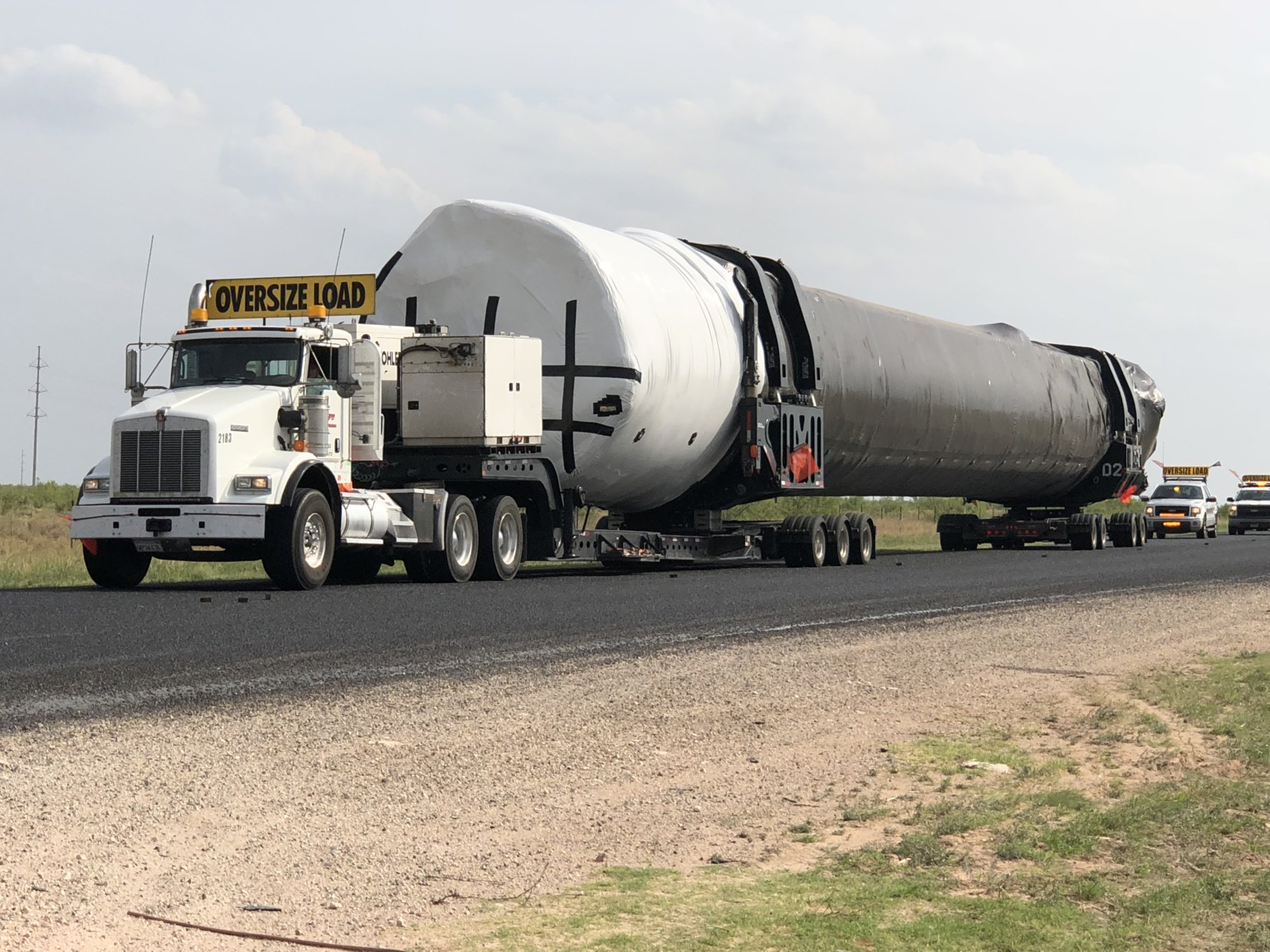
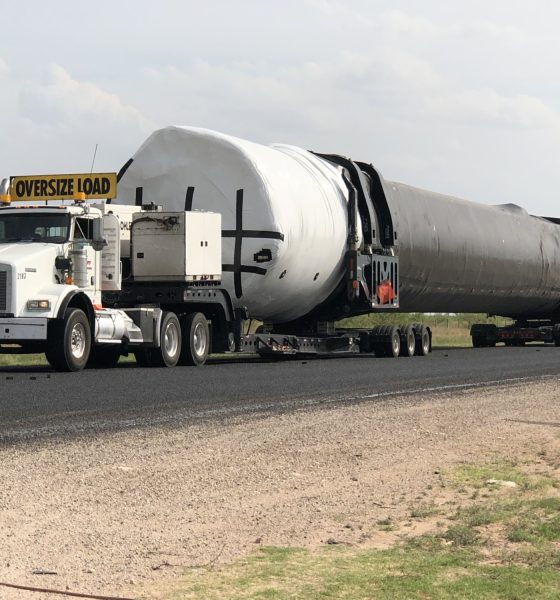
News
SpaceX’s third Block 5 rocket heads to Texas test site as launch marathon nears
A SpaceX Falcon 9 – almost certainly the third Block 5 booster to leave the company’s factory – was spotted passing through New Mexico on the last leg of its trip from California to Texas. Although the shipment is a great sign, it begs the question of how exactly SpaceX plans to launch its next six launches penciled in for July and August.
Bear with me, as this post will dive into the specifics of orchestrating launches – namely having rocket boosters, upper stages, and fairings all ready at the same place and time. Fundamentally, the analysis that follows suggests two main possibilities: 1) two or three of those July/August launches will have to be delayed for booster availability or 2) the first (and perhaps second) truly rapid reuse of Falcon 9 Block 5 boosters will occur before summer’s end.

The first Block 5 Falcon 9 lifts off on May 4, 2018. The upgrade’s rapid reusability optimizations could be crucial for SpaceX’s summer manifest. (Tom Cross)
After conducting routine static fire testing in McGregor, the booster spotted on Monday – B1048 – will likely be shipped West to Vandenberg Air Force Base for the first West coast Block 5 launch in mid-July. B1047, the second Block 5 booster to leave SpaceX’s Hawthorne factory, was spotted miles from Cape Canaveral, FL near the end of May, while B1046‘s early May launch marked the debut of Falcon 9 Block 5 and was expected to undergo several months of disassembly and analysis to ensure the rocket upgrade was functioning as intended. Based on previous patterns, the fourth Block 5 Falcon 9 booster – B1049 – should not be expected to ship from the factory to McGregor until late June or early July. Finally, the last orbital Block 4 booster (B1045) will conduct its second and final launch in the last few days of June, currently NET June 29.
Put simply, B1049 is unlikely to arrive at its first launch site until mid or late July and can thus be taken out of the July running. B1045 will be (presumably) expended after launch, also taking it out of the running for future launches. B1048 will almost certainly travel to Vandenberg Air Force Base (VAFB) for its first launch in July, effectively ruling out its availability for other July and August launches. Furthermore, Iridium’s CEO Matt Desch has stated that both Iridium-7 and Iridium-8 are expected to launch on unflown boosters. Fundamentally, this leaves two Block 5 boosters readily available for four loosely scheduled July and August launches on the East Coast.
- Falcon 9 B1045 prepares for its first launch in mid-April. (SpaceX)
- B1046 returned to Port Canaveral shortly after its May 4 debut, and is now being carefully analyzed as pathfinder hardware. (Tom Cross)
- Falcon 9 B1047 spotted in Florida just a short trip away from Cape Canaveral, where it will likely launch Telsat 19V in mid-July. (Reddit /u/fatherofzeuss)
- What was likely B1049 spotted heading to McGregor, Texas for static fire testing, June 11. (TeslaMotorsClub /u/nwdiver)
Focusing on July’s schedule as it currently stands, B1047 would be required to launch two high-energy geostationary transfer orbit (GTO) missions in as few as two weeks. The nature of drone ship recoveries would cut the time available between the booster’s return to port and its second static fire to perhaps 5-10 days. In other words, there would be almost no time whatsoever for refurbishment, at least compared to the current prospective record of B1045, roughly 70 days between launches.
All things considered, two launches of the same booster in well under a month would be an act of heroics given that B1047’s first launch will be the second or third-ever flight of Falcon 9 Block 5. An extensive upgrade to the venerable rocket intended to make it highly reusable and equally reliable, Block 5 is the culmination of more than half a decade of experience launching a wide array of Falcon 9 versions and 56 total launches. While I would place the odds of a sub-30 day back-to-back reflight happening less than two months from now at maybe 10%, my odds for the next six to nine months are closer to 95% – remember, Musk set SpaceX the goal of two flights of the same booster in 24 hours by the end of 2019. It may sound insane, but it quite literally was what Block 5 was designed to enable.
Although delays are more probable here, the alternative is a truly wild roller coaster of launches and historic reusable rocket milestones. Fingers crossed!
- A rough sketch of SpaceX’s launch schedule over the next few months. (Eric Ralph)
- After CRS-15, all orbital launches will be use Block 5 boosters and upper stages. The upgraded rocket’s next launch is NET July 20. (Tom Cross)
Follow us for live updates, peeks behind the scenes, and photos from Teslarati’s East and West coast photographers.
Teslarati – Instagram – Twitter
Tom Cross – Twitter
Pauline Acalin – Twitter
Eric Ralph – Twitter

News
Tesla FSD fleet is nearing 7 billion total miles, including 2.5 billion city miles
As can be seen on Tesla’s official FSD webpage, vehicles equipped with the system have now navigated over 6.99 billion miles.

Tesla’s Full Self-Driving (Supervised) fleet is closing in on almost 7 billion total miles driven, as per data posted by the company on its official FSD webpage.
These figures hint at the massive scale of data fueling Tesla’s rapid FSD improvements, which have been quite notable as of late.
FSD mileage milestones
As can be seen on Tesla’s official FSD webpage, vehicles equipped with the system have now navigated over 6.99 billion miles. Tesla owner and avid FSD tester Whole Mars Catalog also shared a screenshot indicating that from the nearly 7 billion miles traveled by the FSD fleet, more than 2.5 billion miles were driven inside cities.
City miles are particularly valuable for complex urban scenarios like unprotected turns, pedestrian interactions, and traffic lights. This is also the difference-maker for FSD, as only complex solutions, such as Waymo’s self-driving taxis, operate similarly on inner-city streets. And even then, incidents such as the San Francisco blackouts have proven challenging for sensor-rich vehicles like Waymos.
Tesla’s data edge
Tesla has a number of advantages in the autonomous vehicle sector, one of which is the size of its fleet and the number of vehicles training FSD on real-world roads. Tesla’s nearly 7 billion FSD miles then allow the company to roll out updates that make its vehicles behave like they are being driven by experienced drivers, even if they are operating on their own.
So notable are Tesla’s improvements to FSD that NVIDIA Director of Robotics Jim Fan, after experiencing FSD v14, noted that the system is the first AI that passes what he described as a “Physical Turing Test.”
“Despite knowing exactly how robot learning works, I still find it magical watching the steering wheel turn by itself. First it feels surreal, next it becomes routine. Then, like the smartphone, taking it away actively hurts. This is how humanity gets rewired and glued to god-like technologies,” Fan wrote in a post on X.
News
Tesla starts showing how FSD will change lives in Europe
Local officials tested the system on narrow country roads and were impressed by FSD’s smooth, human-like driving, with some calling the service a game-changer for everyday life in areas that are far from urban centers.

Tesla has launched Europe’s first public shuttle service using Full Self-Driving (Supervised) in the rural Eifelkreis Bitburg-Prüm region of Germany, demonstrating how the technology can restore independence and mobility for people who struggle with limited transport options.
Local officials tested the system on narrow country roads and were impressed by FSD’s smooth, human-like driving, with some calling the service a game-changer for everyday life in areas that are far from urban centers.
Officials see real impact on rural residents
Arzfeld Mayor Johannes Kuhl and District Administrator Andreas Kruppert personally tested the Tesla shuttle service. This allowed them to see just how well FSD navigated winding lanes and rural roads confidently. Kruppert said, “Autonomous driving sounds like science fiction to many, but we simply see here that it works totally well in rural regions too.” Kuhl, for his part, also noted that FSD “feels like a very experienced driver.”
The pilot complements the area’s “Citizen Bus” program, which provides on-demand rides for elderly residents who can no longer drive themselves. Tesla Europe shared a video of a demonstration of the service, highlighting how FSD gives people their freedom back, even in places where public transport is not as prevalent.
What the Ministry for Economic Affairs and Transport says
Rhineland-Palatinate’s Minister Daniela Schmitt supported the project, praising the collaboration that made this “first of its kind in Europe” possible. As per the ministry, the rural rollout for the service shows FSD’s potential beyond major cities, and it delivers tangible benefits like grocery runs, doctor visits, and social connections for isolated residents.
“Reliable and flexible mobility is especially vital in rural areas. With the launch of a shuttle service using self-driving vehicles (FSD supervised) by Tesla in the Eifelkreis Bitburg-Prüm, an innovative pilot project is now getting underway that complements local community bus services. It is the first project of its kind in Europe.
“The result is a real gain for rural mobility: greater accessibility, more flexibility and tangible benefits for everyday life. A strong signal for innovation, cooperation and future-oriented mobility beyond urban centers,” the ministry wrote in a LinkedIn post.
News
Tesla China quietly posts Robotaxi-related job listing
Tesla China is currently seeking a Low Voltage Electrical Engineer to work on circuit board design for the company’s autonomous vehicles.

Tesla has posted a new job listing in Shanghai explicitly tied to its Robotaxi program, fueling speculation that the company is preparing to launch its dedicated autonomous ride-hailing service in China.
As noted in the listing, Tesla China is currently seeking a Low Voltage Electrical Engineer to work on circuit board design for the company’s autonomous vehicles.
Robotaxi-specific role
The listing, which was shared on social media platform X by industry watcher @tslaming, suggested that Tesla China is looking to fill the role urgently. The job listing itself specifically mentions that the person hired for the role will be working on the Low Voltage Hardware team, which would design the circuit boards that would serve as the nervous system of the Robotaxi.
Key tasks for the role, as indicated in the job listing, include collaboration with PCB layout, firmware, mechanical, program management, and validation teams, among other responsibilities. The role is based in Shanghai.
China Robotaxi launch
China represents a massive potential market for robotaxis, with its dense urban centers and supportive policies in select cities. Tesla has limited permission to roll out FSD in the country, though despite this, its vehicles have been hailed as among the best in the market when it comes to autonomous features. So far, at least, it appears that China supports Tesla’s FSD and Robotaxi rollout.
This was hinted at in November, when Tesla brought the Cybercab to the 8th China International Import Expo (CIIE) in Shanghai, marking the first time that the autonomous two-seater was brought to the Asia-Pacific region. The vehicle, despite not having a release date in China, received a significant amount of interest among the event’s attendees.
